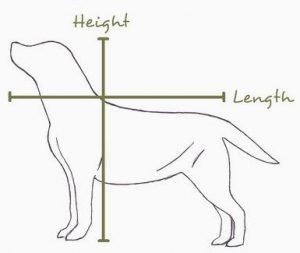There are an overwhelmingly large amount of different dog crates and different dog crate sizes. What size crate for the dog to purchase is going to be mainly determined by the size of your dog. Your pet should be comfortable in the cage, while also be able to move around in it. Yet the dog shouldn’t have too much space in the crate in order for it to feel homey and be the correct size.
What size dog crate should you purchase?
The dog cage size that you choose for your pet shouldn’t be too small and too big. Your pup should be able to move around the cage comfortably without also having too much space. Which means that buying the biggest crate on the market for a small dog breed isn’t the best idea. If the crate is too large, the dog won’t feel safe and protected in it and you won’t be able to discipline your dog whilst house training.
Therefore, there are different dog crate sizes, in order for every canine to have the right one. The main rule for the dog cage sizes to be correct is for the dog to be able to sit up and stand up straight in the cage and have enough space for his head. So if you are unsure on what size dog crate to purchase, the easiest way to figure it out is by measuring your dog and the crate.
Sizes of dog crates
The most popular way to distinguish dog crate sizes in by using indications such as 2x small, extra small, small, medium, intermediate, large and extra-large. These sizes might differ for brands, but overall, they are somewhat similar for all. Extra, extra small, extra small, small and medium are sizes designed for the pocket dogs and small dog breeds, but the following three sizes – intermediate, large and extra-large – are meant for larger breeds.
- XX-small crates are for dogs that are approximately 9 inches tall and 16 inches long. Those are mainly the so-called pocket dogs, and they include breeds such as chihuahuas, Yorkshire terriers, and Pomeranians.
- Next size is extra small, for doggies that are 11 inches tall and 18 inches long, including miniature dachshund, Maltese, and Pekingese.
- Small is for dogs that are 16 inches tall and around 22 inches long, and from the popular breeds, those are Cavalier King Charles, French bulldogs, and Scottish terriers.
- The size medium is aimed at beagles, miniature schnauzers, and Welsh corgis, which are around 20 inches tall and approximately 24 inches long.
- Size intermediate is for dogs who are 23 inches tall and can be around 30 inches long, and those are cocker spaniels, Shetland sheepdogs, and standard poodles.
- Large dog crate size is for dogs that are 25 inches tall and 32 inches longs, and extra-large, is for dogs that are 28 inches tall and 26 inches long. They are designed for chow chows, German shepherds, and retrievers.
- And although XXL crates do exist, it is observed, that bigger dogs are more rarely put into cages and crates, because often they are found outdoors, performing guard dog duties. For these dogs, placing them in a crate is only necessary when transporting them.
How to measure your pups for the right dog crate sizes?
 But in order to find the correct size crate, you need to measure your dog, because sometimes your pup can differ from the breed’s average size. So, in order to determine what size dog crate to get, you need to measure the length and height of your pet.
But in order to find the correct size crate, you need to measure your dog, because sometimes your pup can differ from the breed’s average size. So, in order to determine what size dog crate to get, you need to measure the length and height of your pet.
- The first step is to measure from the tip of dog’s nose to the base of dog’s tale whilst the dog is standing on all four feet, this will provide you with the length of your dog.
- The second step is to measure the length of the dog whilst it is sitting, from the floor to the tallest point of dog’s nose. Dog’s height is measured in sitting position because for some breeds, they are a lot taller when sitting than when they are standing.
When you have measured both positions, add two to four inches to those number and you will get a size of the smallest crate that can be purchased for your dog. So when you are going shopping take a measuring tape with you and measure each crate in order to be completely confident that you are buying the right sized crate.
Overall, if you measure your dog correctly and pay attention to these measurements when purchasing a dog crate, you should be just fine. However, remember, that some breeds are very small as puppies, but tend to grow extremely fast. If you want to save up money and still provide your furball with sufficient crate, try looking for ones, which can be adjusted as needed. This way, you will be able to adjust the size of the crate yourself as your pet grows. And remember, that the key is for the dog to feel comfortable in their crate, which means also not having too much space in the cage.





